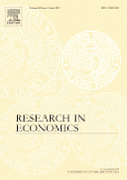Innovation financière pour les pauvres dans le mondeClermont-Ferrand et en ligne
Le Global Development Network (GDN) qui a récemment ouvert son bureau européen, GDN Europe, à Clermont Ferrand a animé en collaboration avec la Fondation pour les études et recherches sur le développement international (FERDI) une table ronde pour l’édition 2023 de la Clermont Innovation Week (#CIW23) sur le thème : Innovation financière pour les pauvres dans le monde.
